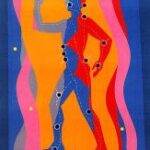 Studies of acupuncture to treat chronic pain have largely failed to demonstrate an advantage of traditional acupuncture over sham acupuncture.
Studies of acupuncture to treat chronic pain have largely failed to demonstrate an advantage of traditional acupuncture over sham acupuncture.
Researchers at the University of Michigan and Harvard Medical School studied whether the degree of enhanced sensitivity to experimental-pressure pain (hyperalgesia) may be a factor in determining whether a patient responds to sham acupuncture treatment.
First, the details.
- 50 patients with fibromyalgia were randomly assigned to a 4-week treatment.
- Traditional acupuncture
- Sham acupuncture
- Neither the patients nor researchers knew the treatment given — double blind.
And, the results.
- Patients with low pain sensitivity had a significantly reduced clinical pain response to sham acupuncture.
- This was not seen with traditional acupuncture.
- Sham-acupuncture-treated patients who were more sensitive to pain also had greater blood levels of insular glutamate+glutamine at the start of the treatment than patients who were less sensitive.
The bottom line?
The authors concluded, “Pressure-pain testing may identify patients who are less likely to respond to sham acupuncture. This effect may relate to the levels of brain excitatory neurotransmitters.”
Glutamate is a major excitatory neurotransmitter in the cortex of the brain. It plays a role in transmitting the pain response.
It’s reported that enhanced glutamatergic neurotransmission resulting from higher concentrations of glutamate in the posterior insula of the brain may play a role in the pathophysiology of fibromyalgia and other centrally mediated pain syndromes
This study is important because it addresses a major criticism of acupuncture clinical studies.
2/19/13 9/49 JR